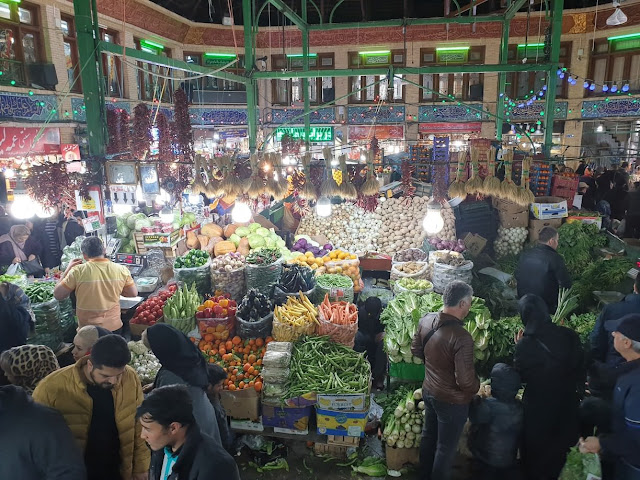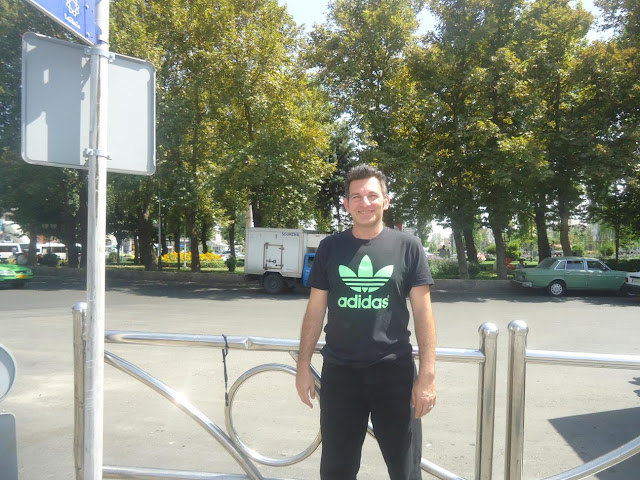Tajrish (تجریش) is a neighborhood along the northern edge of Tehran, the capital of Iran. This neighborhood is one of the oldest parts of Tehran and has lately become popular for the rich because of the low levels of pollution created by the area's favorable location along Tehran's northern hills. Tajrish is situated in the Shemiran Township.
The origins of its name are unclear. One story goes that the name originally consisted of two parts taj and rish. It was named this because about 150 years ago a rich woman lived there and much of the properties there belonged to her. She had a habit of wearing a gold crown and her hair beneath the crown made her look as if she was wearing a crown with a beard, thus the name Taajrish which changed to Tajrish as time passed. Another explanation is that in the Pahlavi language Tigr meant arrow which was a nod to the mountainous view visible from the area.
Tajrish wasn’t much populated until people migrated from the old Tajrish Village (located in the vicinity of present day Pol’e Rumi Street in Tehran). The reason for the migration was the sudden emergence of wolves causing people to move further north near Imamzadeh Saleh and thus found the present day Tajrish. With its gradual improvement it eventually became a vacation spot for the Seljuk Toghrel in the summer months while the Qajars selected it as their capital many years later.
Initially Tajrish had a makeup similar to Masouleh, with homes sharing yards and rooftops and narrow and twisting alleyways. Its focal point was Imamzadeh Saleh. The Sycamore tree adjacent to it was believed to be the oldest know Sycamore tree in Iran (It no longer stands there as a combination of natural and manmade factors). Up until Reza Shah’s era Tajrish remained a vacation spot for the wealthy, however, with the construction of Shariati Street access to Tajrish became easier thus increasing its visiting traffic flow.
Until the 1970s, Tajrish and neighboring Shemiranat were still small towns along Tehran's border often used for recreation by city residents. The area was relatively disconnected from Tehran's urban core but was easily accessible and became a popular vacationing spot. With the growth of population and need for more space from the 1970s onwards, Tajrish eventually gained a relatively dense population and became better connected with the rest of the city. Today many of the summer villas in Tajrish have given way to tall skyscrapers with remnants of the original build of the city only evident en route to the Darband area.
 Tajrish Square is currently one of the busiest parts of Tehran, with bus and cab terminals, shopping malls and many restaurants. It is also one of the most important transportation hubs in Tehran and many other suburbs are accessible from this square.
Tajrish Square is currently one of the busiest parts of Tehran, with bus and cab terminals, shopping malls and many restaurants. It is also one of the most important transportation hubs in Tehran and many other suburbs are accessible from this square. Tajrish Bazaar has been built according to architectural style which closely resembles the traditional bazaar located in downtown Tehran. Some of its arches have been destroyed due to construction of multi-story buildings and its traditional identity has been threatened by irregularity of window shops and external view of new stores. Tajrish Bazaar includes a roofed passageway through which thousands of people pass en route to the Bazaar for purchasing goods.
The Bazaar of Tajrish neighborhood was scheduled be renovated at an estimated cost of about 28 billion rials. The Deputy head of Tehran Beautification Organization for technical affairs noted that the project will include reconstruction of the traditional market using both traditional and modern styles, wastewater collection, power, gas, telecommunication installations, as well as repair of small and large shops and passageways. Inscriptions on tiles were to be installed at the top of shops showing the names of those shops while some 110 columns have been built through the market to strengthen shops in the face of natural disasters such as earthquakes.












This comment has been removed by a blog administrator.
ReplyDelete